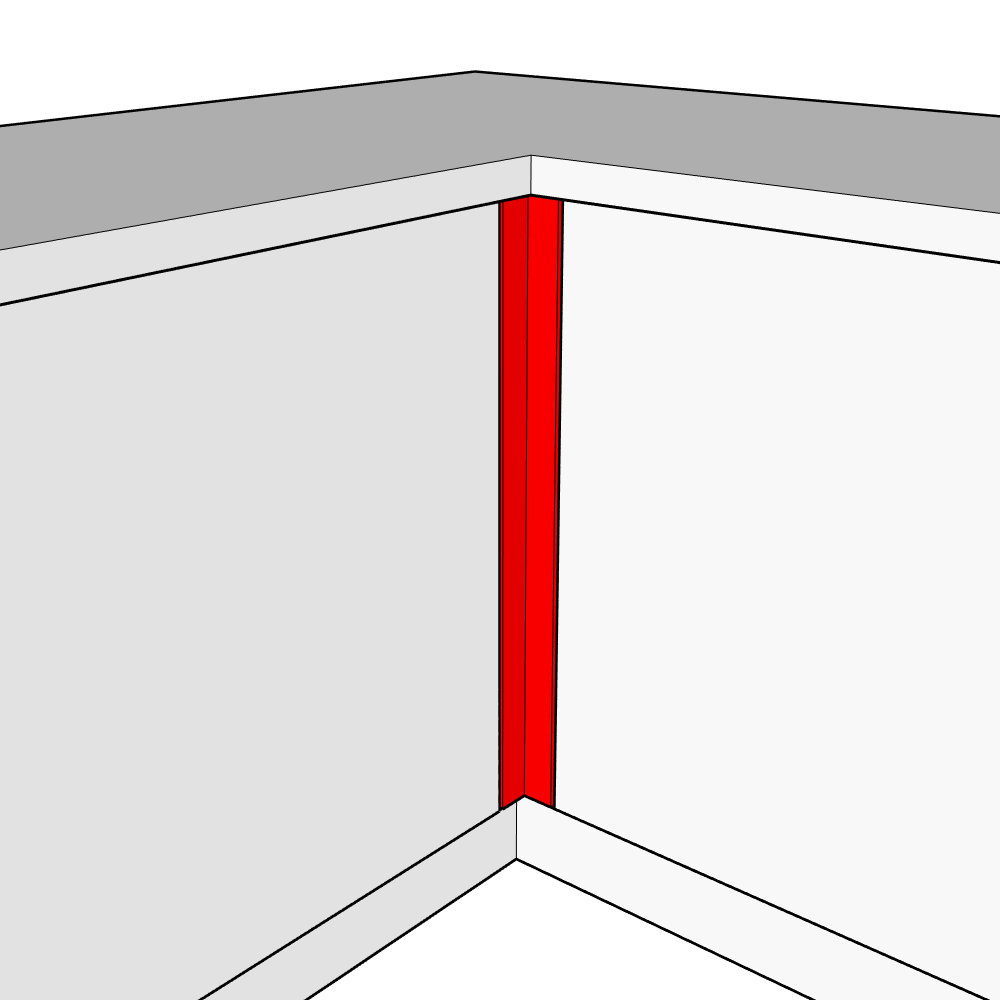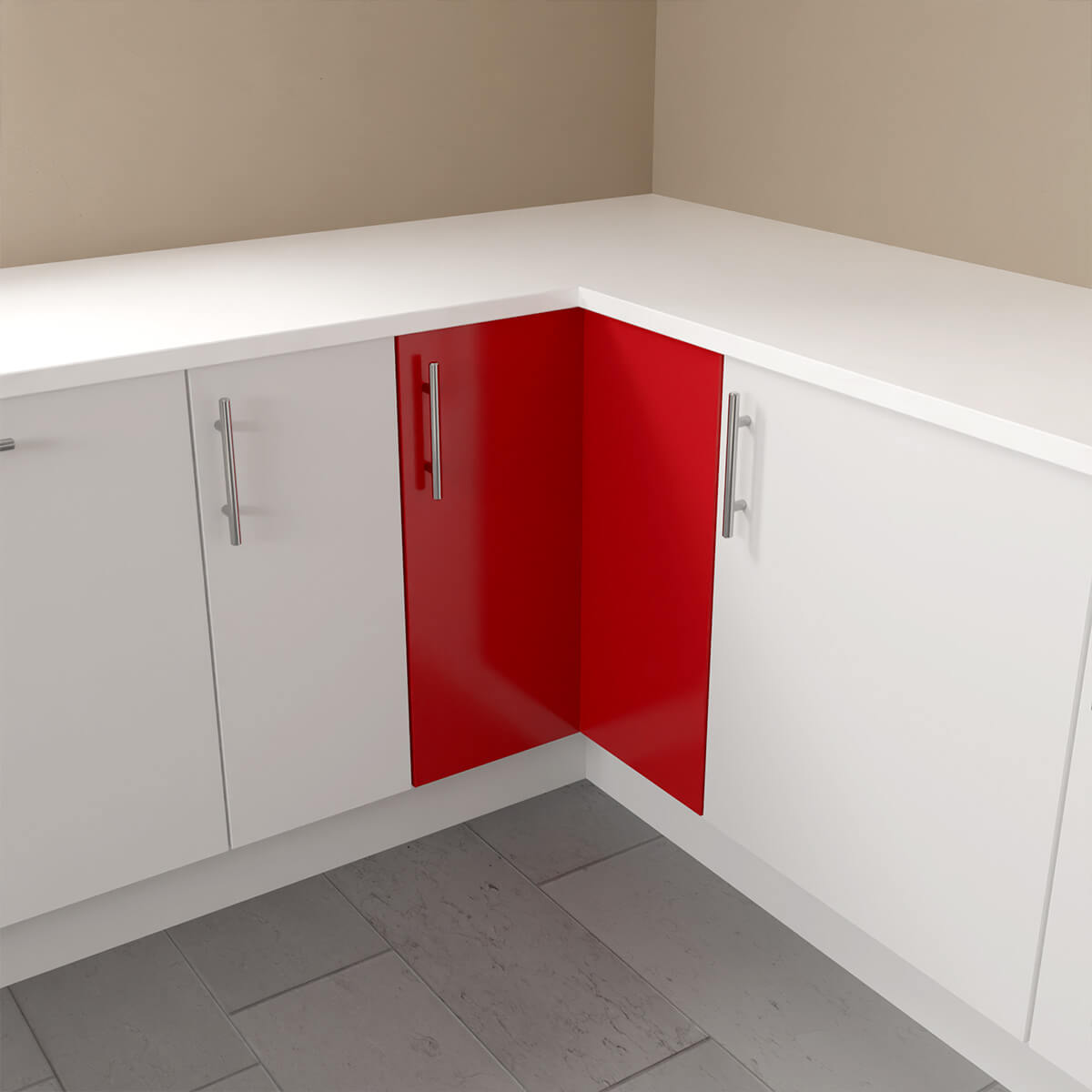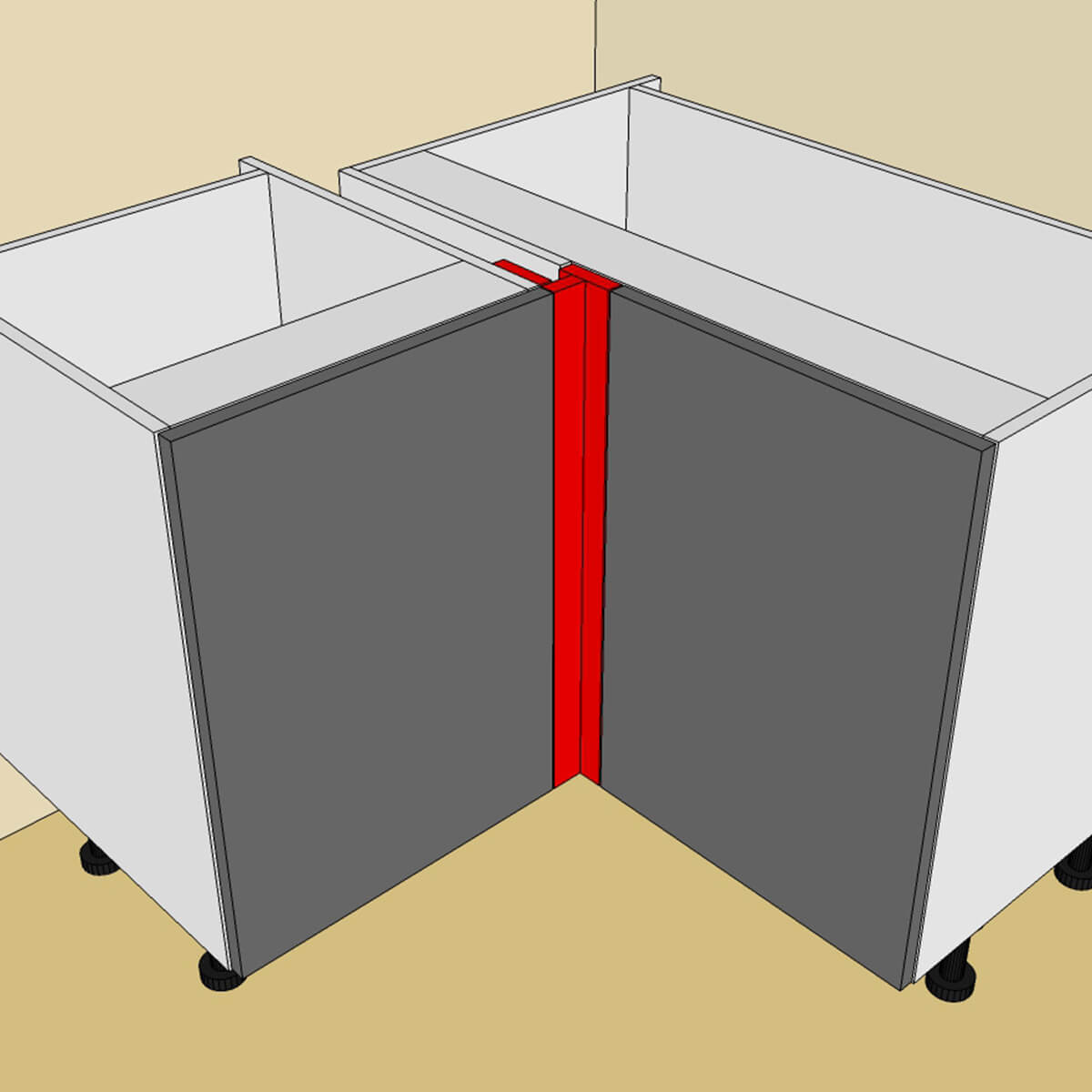Understanding Blank Panel Kitchen Corner Units
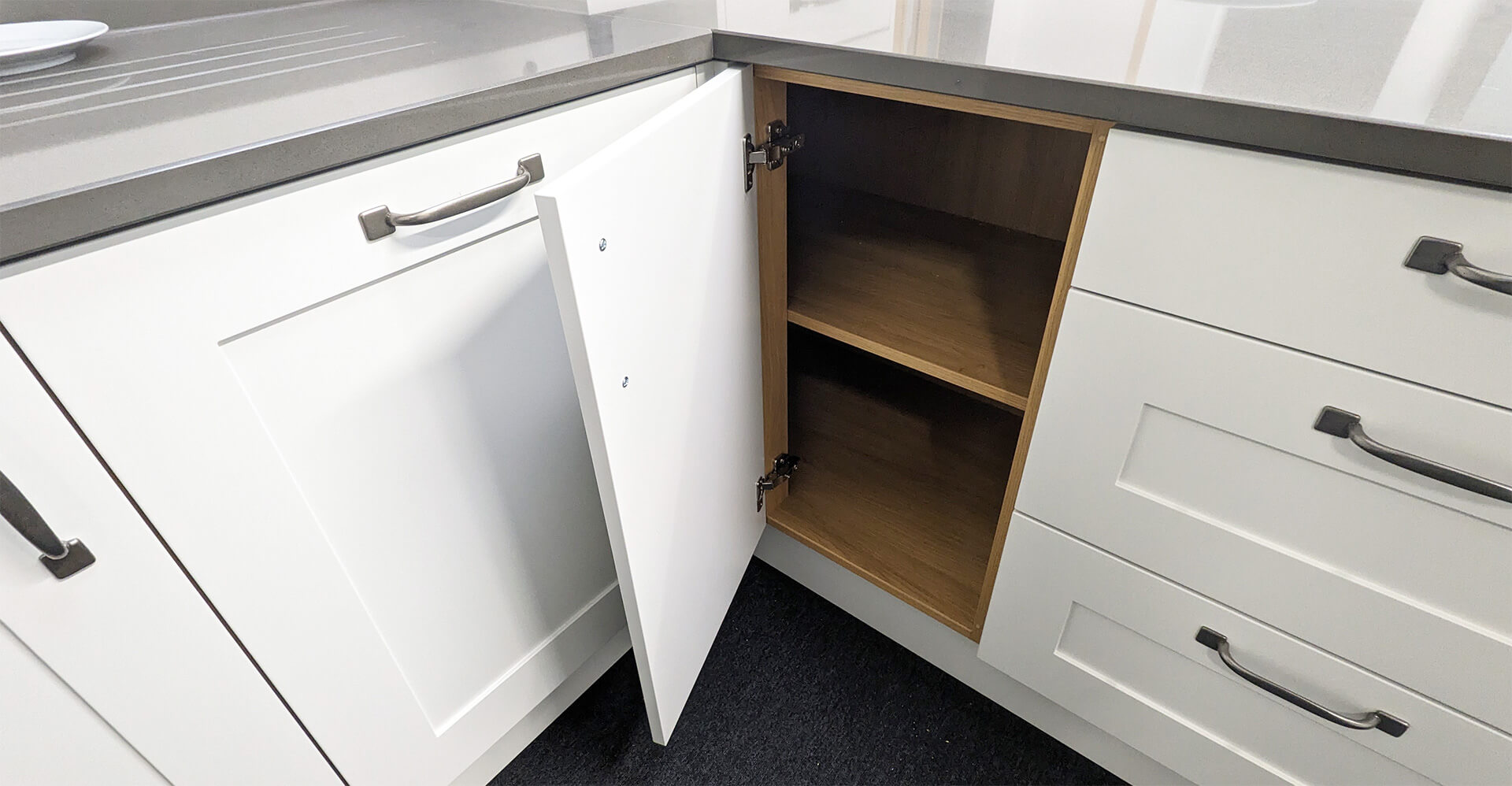
Left Hand Blank Corner Unit from Better Kitchens Showroom
When it comes to designing or selecting your kitchen layout, understanding the terminology used to describe different units is crucial.
One common area of confusion arises with the distinction between Left Hand (LH) and Right Hand (RH) Blank Corner Units.
This guide aims to provide you with a straightforward explanation to ensure you make the right choice for your kitchen.
The Basics of Corner Units
Corner units are designed to maximise the use of space in your kitchen, fitting snugly into the corner to provide you with ample storage or counter space.
They come in two main types: base units, which sit on the floor, and wall units, which are mounted on the wall.
Both types of corner units can be specified as either Left Hand Blank or Right Hand Blank, which determines how they will fit into your kitchen layout.
Left Hand Blank vs. Right Hand Blank:
What's the Difference?
The distinction between Left Hand and Right Hand units is not about the location of the door when facing the unit but rather the positioning of the blank panel and NOT the direction in which the door opens.
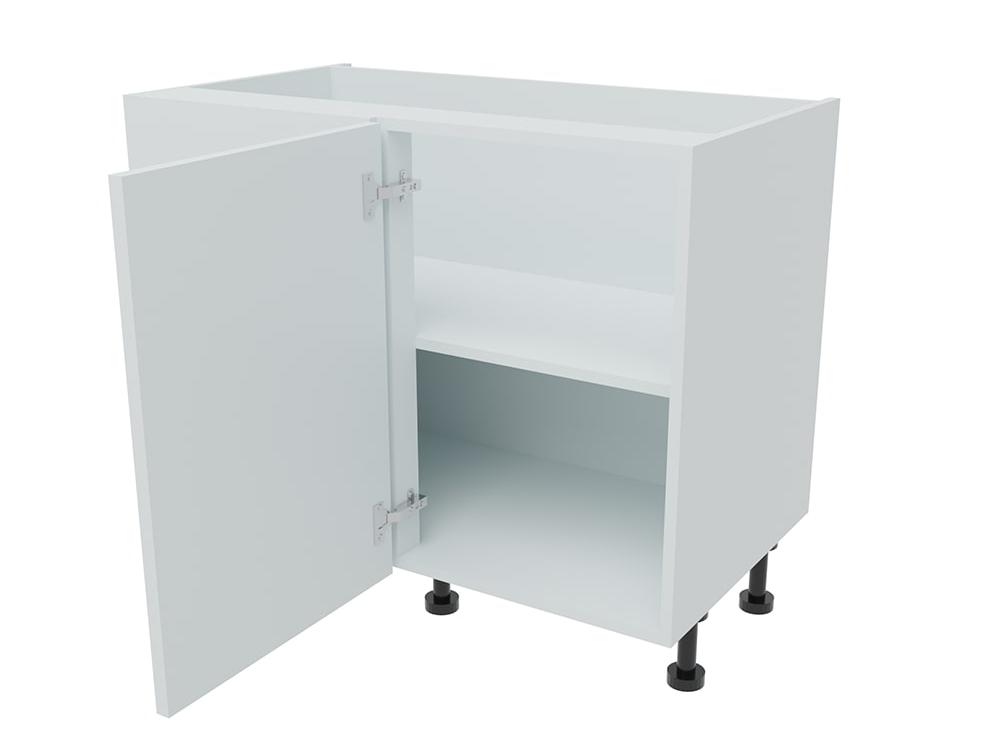
LEFT Hand Blank Corner Unit - Better Kitchens
Left Hand Blank Units
A left-hand corner unit has a blank panel on its left side. This panel is designed to seamlessly integrate with an adjacent unit to the left of the corner unit.
Although the door itself is physically located on the right-hand side of the unit, it is considered a left-hand unit because the blank panel and the door's hinge are on the left.
The door swings open from the right, hinged on the left side of the central post.

RIGHT Hand Blank Corner Unit - Better Kitchens
Right Hand Blank Units
Conversely, a right-hand unit features a blank panel on the right side, meant to align with an adjacent unit to the right.
Even though the door may appear on the left-hand side, it is a right-hand unit because the blank panel and the hinge are positioned on the right.
The door opens from the left, hinged on the right side of the central post.
Quick Reference: Left Hand vs. Right Hand Blank Panel Units
To further simplify the distinction between Left Hand and Right Hand blank panel kitchen corner units, we've compiled a quick reference table.
This table breaks down the key features of each unit type, providing a clear visual guide to help you remember the differences and make the best choice for your kitchen layout.
| Feature | Left Hand Blank Unit | Right Hand Blank Unit |
|---|---|---|
| Blank Panel | Located on the left side of the unit | Located on the right side of the unit |
| Door Position | Door is on the right-hand side | Door is on the left-hand side |
| Door Hinge | Hinged on the left side of the central post | Hinged on the right side of the central post |
| When to Use | When the unit will be on the left of an adjacent unit | When the unit will be on the right of an adjacent unit |
| How to Remember | "Left-hand blank panel, right-hand door opens" | "Right-hand blank panel, left-hand door opens" |
| Which Internal Fittings? | Use Right Handed Pull Out Corners and Carousels | Use Left Handed Pull Out Corners and Carousels |
This table is designed to provide you with an at-a-glance understanding of how left-hand and right-hand units are determined.
Choosing the Correct Unit for Your Kitchen
To determine whether you need a left-hand or right-hand corner kitchen unit, consider the layout of your kitchen and where you plan to place the unit.
Think about the direction in which you want the door to open and how it will best serve your space and movement in the kitchen.
Tips for Remembering the Difference
Remembering which unit is which can be simplified with a few tips:
- Think in terms of blank panels: The side of the blank panel (left for LH units and right for RH units) determines the unit's designation.
- Consider the hinge: The side of the door hinge (left for LH units and right for RH units) is another clue to the unit's orientation.
- Visualise the layout: Imagine where the unit will fit in your kitchen and how the door will function within that space.
Conclusion
Understanding the difference between left-hand and right-hand kitchen corner units is key to planning your kitchen layout effectively.
By focusing on the position of the blank panel and the door hinge, you can easily determine which type of unit you need.
This knowledge will help you navigate the selection process more confidently, ensuring that your kitchen is both functional and aesthetically pleasing.
Remember, the right choice depends on your kitchen's specific layout needs and how you move within the space.
If you're planning your own DIY Kitchen installation, try our FREE online kitchen planner or why not get in touch with the Better Kitchens team to discuss your project.

